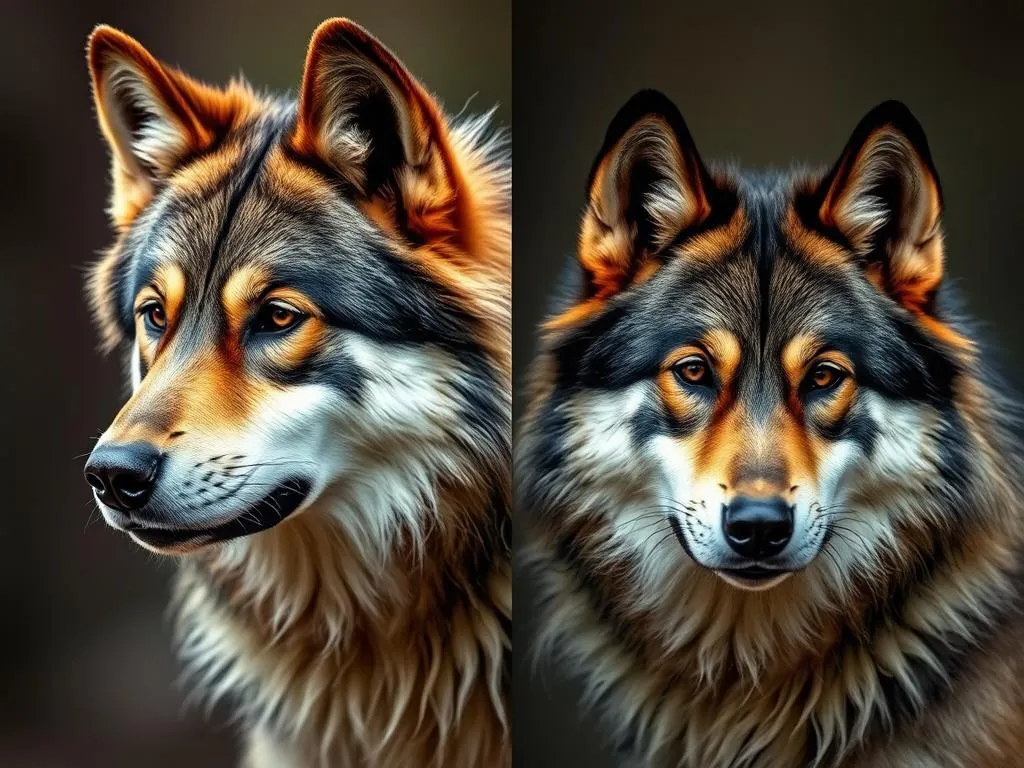
Introduction
Wolf dog hybrid breeds represent a fascinating intersection between domestic dogs and their wild ancestors, wolves. The allure of these hybrids stems from their striking appearance and the unique combination of traits they inherit from both species. The history of wolf dog hybrids is as complex as their genetics, dating back to early human interactions with wolves, where the lines between domestication and wild nature blurred. Understanding these breeds is crucial for potential owners, as life with a wolf dog hybrid can be both rewarding and challenging.
This article will delve into the nature of wolf dog hybrids, exploring their characteristics, advantages, and disadvantages, as well as the legal considerations and care requirements associated with them. By the end, you’ll have a comprehensive understanding of these unique breeds and what it entails to be their owner.
Understanding Wolf Dog Hybrid Breeds
What are Wolf Dog Hybrids?
Wolf dog hybrids are the result of breeding between domestic dogs and wolves. Hybridization can occur in various degrees, creating a spectrum from low-content hybrids (more dog than wolf) to high-content hybrids (more wolf than dog). The differences between wolf dogs and domestic dogs are significant, not just in appearance but also in behavior and temperament. While domestic dogs have been selectively bred for thousands of years to enhance traits desirable for companionship, wolf dogs often retain more instinctual behaviors typical of their wild ancestors.
Types of Wolf Dog Hybrids
Wolf dog hybrids can be categorized based on their genetic makeup:
- Low-content hybrids: These hybrids typically have a wolf content of less than 25%. They usually resemble domestic dogs more than wolves and are often easier to train and socialize.
- Mid-content hybrids: These generally have between 25% to 50% wolf ancestry. They exhibit a mix of characteristics from both species, making them more challenging than low-content hybrids.
- High-content hybrids: With over 50% wolf genetics, these hybrids often possess strong instincts and behaviors typical of wolves, which can make them less suited for the average pet owner.
Common breeds involved in hybridization include the Alaskan Malamute and the Siberian Husky, both of which share historical ties to wolves.
Characteristics of Wolf Dog Hybrids
Physical Traits
Wolf dog hybrids can vary significantly in size and appearance, depending on their genetic makeup. Generally, they are larger than typical domestic dogs, with many standing between 24 to 30 inches at the shoulder and weighing anywhere from 50 to 120 pounds. The coat types and colors may also vary, ranging from the classic wolf gray to browns, blacks, and whites. Some hybrids may even exhibit striking blue or heterochromatic eyes, particularly those with Siberian Husky ancestry.
Temperament and Behavior
The temperament of wolf dog hybrids can be quite complex. While they can be loyal and affectionate, they also require a high level of socialization to thrive. Their intelligence is often superior to that of many domestic breeds, which can make training both rewarding and challenging. However, their strong prey drive means they may not be suitable for homes with small pets.
Health Considerations
Like all breeds, wolf dog hybrids can have health issues, but the hybrid nature can introduce some unique concerns. Common health problems include hip dysplasia, skin issues, and certain genetic conditions inherited from either parent lineage. The lifespan of a wolf dog hybrid typically ranges from 12 to 15 years, akin to many large dog breeds.
Pros and Cons of Owning a Wolf Dog Hybrid
Advantages
Owning a wolf dog hybrid can be incredibly rewarding. These dogs often form strong bonds with their owners, demonstrating loyalty and affection that can rival any domestic breed. Their unique appearance and mix of traits make them stand out, offering an aesthetic appeal that many find irresistible.
Disadvantages
However, the challenges of owning a wolf dog hybrid cannot be overlooked. Many regions have legal restrictions and regulations regarding their ownership, which can complicate the process of bringing one into your home. Additionally, these hybrids typically have high exercise and space requirements, necessitating a large yard or access to open areas. Training and socialization can also be particularly challenging, often requiring experienced handlers who understand canine behavior and instincts.
Legal Considerations and Regulations
Overview of Legislation
The ownership of wolf dog hybrids is subject to varying state and local laws. Some areas have strict regulations or outright bans on owning wolf dogs, citing concerns over safety and animal welfare. It is crucial for potential owners to research the laws in their area to ensure compliance, as well as to understand the potential risks involved.
Licensing and Insurance
In some jurisdictions, owning a wolf dog hybrid may require specific licensing. Insurance can also pose challenges, as many standard pet insurance policies do not cover wolf dogs due to their hybrid nature. Potential owners should consult with insurance providers to understand their options and the potential costs involved.
Caring for a Wolf Dog Hybrid
Training and Socialization
Training and socialization are paramount for the successful ownership of wolf dog hybrids. Early training is essential, and positive reinforcement techniques are recommended to encourage desired behaviors. Socialization with a variety of people, animals, and environments will help mitigate any potential behavioral issues down the line.
Exercise and Activity Needs
Wolf dog hybrids are highly energetic and require substantial daily exercise. Owners should aim for at least two hours of vigorous activity each day, which may include running, hiking, and interactive play. Engaging these dogs in mentally stimulating activities, such as puzzle toys or training exercises, can also help prevent boredom and destructive behaviors.
Diet and Nutrition
Proper nutrition is vital for the health of wolf dog hybrids. While there is no one-size-fits-all diet, high-quality commercial dog food or a raw diet formulated for large breeds can be suitable. Owners should consult with veterinarians to ensure their hybrid’s specific dietary needs are met, considering factors like age, weight, and activity level.
Popular Wolf Dog Hybrid Breeds
Overview of Notable Breeds
Some of the most notable wolf dog hybrids include:
- Siberian Husky-Wolf Hybrid: Known for their striking appearance and friendly disposition, these hybrids often retain a strong prey drive.
- Alaskan Malamute-Wolf Hybrid: These hybrids possess a robust build and are renowned for their strength and endurance.
- German Shepherd-Wolf Hybrid: Combining the loyalty of the German Shepherd with the wild nature of wolves, these hybrids can be both intelligent and protective.
Each breed brings its unique traits and challenges, making it essential for prospective owners to research individual characteristics.
Comparison Chart
| Breed | Size (Weight) | Temperament | Exercise Needs | Training Difficulty |
|---|---|---|---|---|
| Siberian Husky-Wolf Hybrid | 50-90 lbs | Friendly, Energetic | High (2 hours daily) | Moderate |
| Alaskan Malamute-Wolf Hybrid | 80-120 lbs | Loyal, Strong | High (2 hours daily) | Moderate |
| German Shepherd-Wolf Hybrid | 70-100 lbs | Intelligent, Protective | High (2 hours daily) | High |
Real-Life Experiences and Testimonials
Personal Stories from Owners
Many owners of wolf dog hybrids share stories of the profound connections they have with their pets. Some describe their hybrids as fiercely loyal companions who thrive on their owner’s attention and activity. However, others note the challenges they faced, particularly in training and managing their dog’s instinctual behaviors.
Expert Opinions
Veterinarians and trainers often emphasize the importance of understanding the unique needs of wolf dog hybrids. Expert insights highlight that while these dogs can be incredibly rewarding, they require an experienced owner who can provide the necessary structure and socialization to ensure a balanced and happy life.
Conclusion
Owning a wolf dog hybrid can be a deeply fulfilling experience, but it is not without its challenges. From understanding their unique characteristics and legal considerations to ensuring proper care and training, potential owners must be diligent in their research. The bond formed with these extraordinary animals is significant, but it comes with the responsibility of meeting their specific needs. Ultimately, those considering welcoming a wolf dog hybrid into their home should weigh all factors carefully to ensure a harmonious living environment for both pet and owner.









